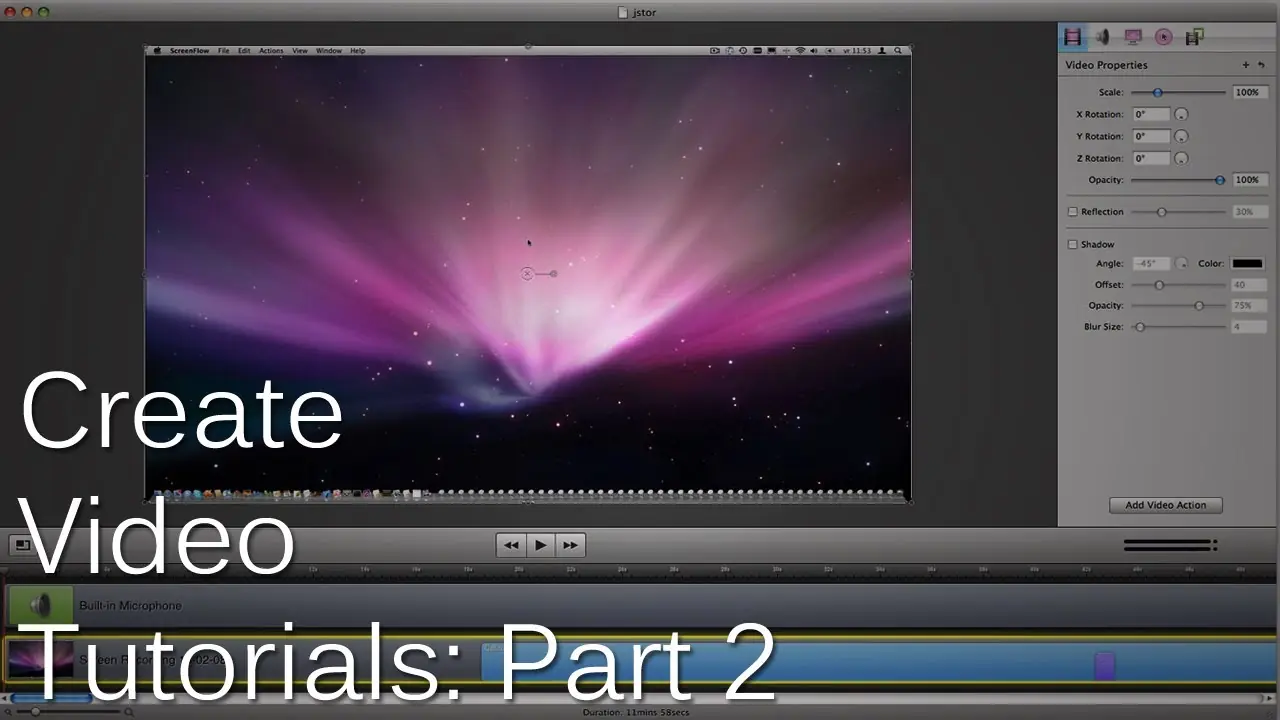
In this video I’m going continue talking about how to create video tutorials by focusing on the recording process. If you haven’t done so already, watch our previous video on choosing a topic and preparing a script.
When creating video tutorials the quality of your audio is as important, if not more important, than the quality of your video. When recording your videos, it is crucial that you use a microphone that can be placed close to your mouth and won’t pick up a lot of background noise. For this video I am using a lavalier microphone that clips onto my shirt. In other videos I use a Shure SM58 handheld microphone. Depending on what type of microphone you’re using, you can plug it into your computer directly or through an external soundcard or mixer.
To record your screen, you want to use a program that can capture your screen. There are a ton of different software options depending on what operating system you’re using. If you’re on Windows you can use the free program Camstudio or a host of applications built for live video streaming like Open Broadcaster Software. There is also Camtasia which runs on both Windows and Mac OSX.
If you’re on a Mac you can use programs like Screenflow or iShowU. If you don’t want to spend any money, you can even record your screen using the latest version of QuickTime Player. I’d suggest that you compare the features and pricing of the different programs to make an informed decision on which one is right for you. Personally, I like to use Screenflow. It allows me to record my voice, my computer screen, the audio playing out of my computer’s speakers, and an additional connected video input like my webcam all at the same time.
In some of my video tutorials I use both a recording of my screen with video shot on a DSLR. When using 2 different video sources, it is important to have a common link between them so that you can quickly sync them when you begin editing. I do this by having a common audio cue in both the recording of my screen and my camera’s video. At the beginning of each video, I’ll clap my hands so that both the microphone in my laptop and my camera will pick up the audio. Then I can sync the two clips together in my editing software.
The next video in this series on creating video tutorials will be posted on Wednesday June 19th and will cover editing your video tutorials and compressing them for the web.